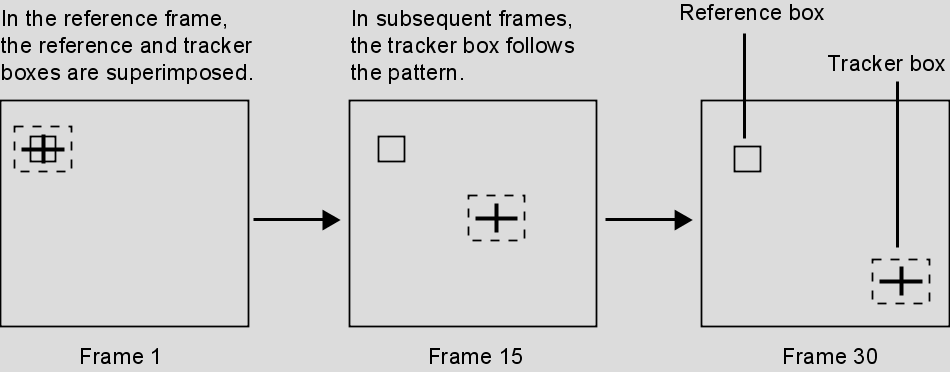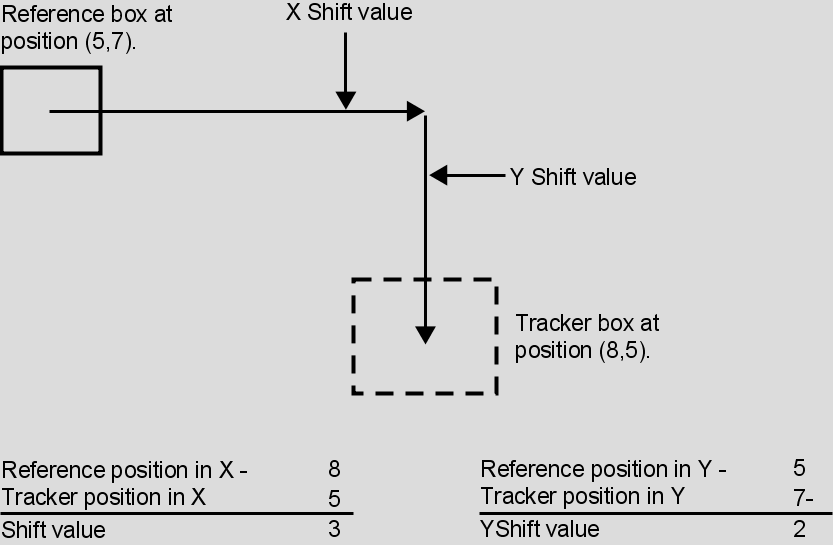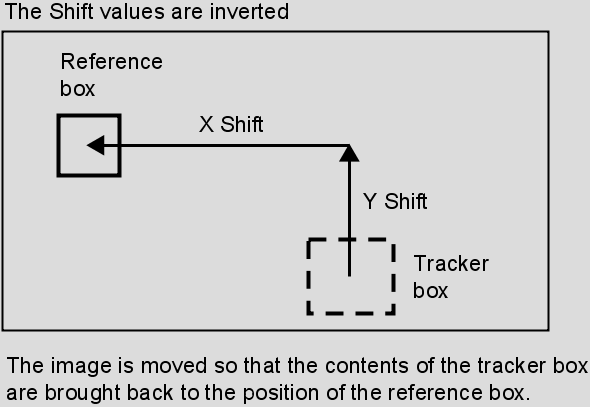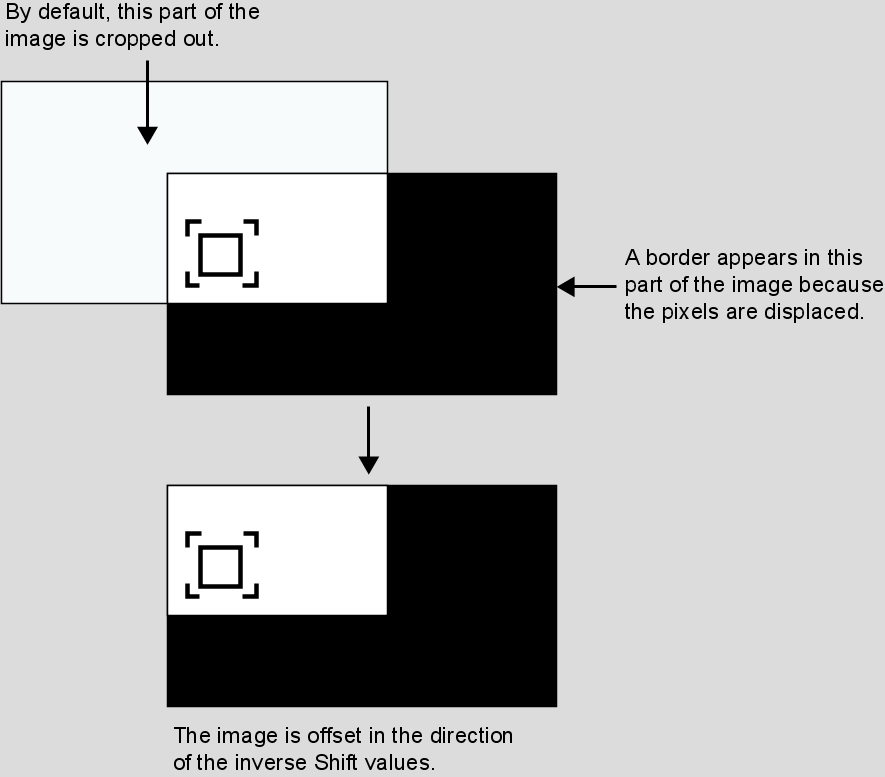The Stabilizer uses trackers to generate tracking data. Each tracker consists of a solid box, called the reference box, and a dashed box, called the tracker box. The reference box establishes the reference point (the feature to track or stabilize) in any frame of the sequence. The tracker box indicates to the Stabilizer where to locate the reference point. The tracker box follows the frame-to-frame movement of the reference point.


![]()
(a) Tracker number (b) Tracker box (c) Reference box
You start by selecting one or more reference points on your clip. Locate the first frame containing the movement to be tracked (the reference frame). In general, the reference frame is the first frame of the sequence. The choice of the reference point depends on whether you are tracking or stabilizing. When tracking, the reference point is a feature you want to track; when stabilizing, the reference point represents the point around which the image is stabilized. See Selecting a Reference Point for details. Place the reference box(es) around the selected feature(s).
Once you have set the tracker positions, start the tracking process, also referred to as analyzing the clip. During the analysis, the tracker box associated with each tracker moves as the Stabilizer looks for a pattern that matches the reference in each frame of the clip.



The Stabilizer calculates the difference between the position of the tracker box and the position of the reference box to produce X and Y Shift values. Shift values represent a measurement in pixels and subpixels of how much the reference point has moved.



When the analysis is complete, you fine-tune it if a tracker box has strayed from the reference it was supposed to follow. Once you are satisfied with the results, you can apply the data to the clip.
To track, the Stabilizer applies the Shift values “as is.” To stabilize, the Stabilizer inverts the X and Y Shift values in each frame of the sequence, and moves the image according to these values. This gives the impression that the reference point stays in the same position throughout the sequence. Because the image is moved during stabilization, a border appears on one or more edges, which means that you lose some pixels. The following illustrations summarize the process.





